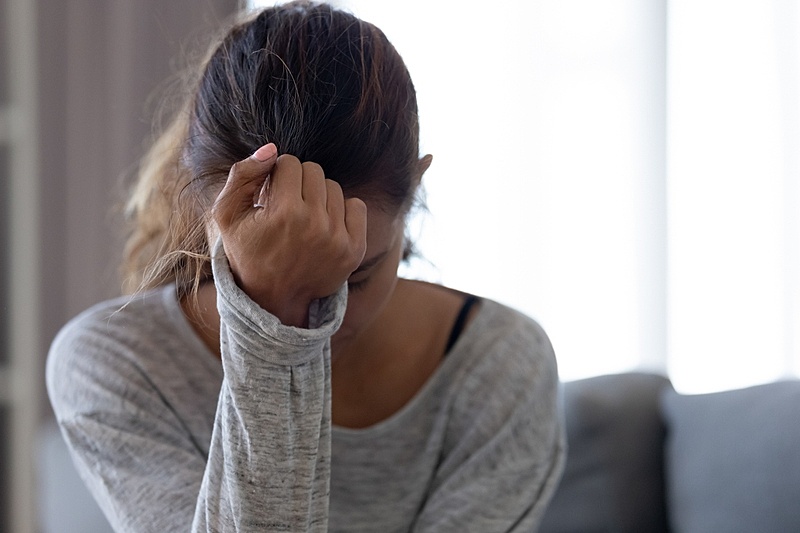
At one point or another in life a person can feel sad or overwhelmed by the demands of daily life. However, when the feelings become continuous, are longstanding or chronic in nature, these may be considered signs of depression. Depression is defined as a chronic feeling of sadness and the inability of a person to feel pleasure. According to the World Health Organization (WHO), depression is a leading cause of disability which can potentially lead to suicide if not identified and treated. The feelings of despair, isolation, and emptiness can consume an individual and no person is immune from its presentation. There are significant life events that have the potential to trigger depression such as the loss of a loved one or the end of a job or career. While some individuals may experience a temporary period of negative feelings, depression is unique in that it can persist for weeks. The Diagnostic and Statistic Manual of Mental Disorder, Fifth Edition (DSM-V) provides the diagnostic criteria for depression which includes five or more symptoms during the same two week period where at least one of the symptoms can either be depressed mood or loss of interest or pleasure.
Am I fully informed about the best and available therapeutic interventions or treatment options for depression?
As a clinician I consider this question when clients present to me the signs and symptoms of depression. Before initiating the therapeutic process it is important that I have a well rounded understanding of the different ways that depression can present in clinical practice.
Signs and Symptoms
Depression is a type of mood disorder that differs from the typical mood fluctuations that people can experience as they journey through life. According to the National Institute of Mental Health (NIMH), it is estimated that 21 million adults in the United States have had at least one major depressive episode with the prevalence of a major depressive episode being higher among adult females. When presented with a client that has a diagnosis of depression it is important to have a full awareness of what some of the common symptoms of the condition are. The symptoms of depression can include:
- reduced interest or pleasure in activities that a person previously enjoyed
- a loss of sexual desire
- changes in appetite
- unintentional weight loss or weight gain
- sleeping too much or too little
- agitation, restlessness, and pacing up and down
Treatment of Depression
Once there has been a careful examination of the symptoms of depression, the process of making a diagnosis and treatment can begin. Depression is viewed to be a condition that can be treated but an individual has to be open to the process of treatment in order to increase the chances of success. When it comes to the initial treatment of depression approximately half of people do not respond to the first round of treatment and may require combination treatment in order to achieve relief of symptoms. Once remission of symptoms is achieved there is also the possibility that it can come back. The treatment of depression can include three elements which are support, psychotherapy, and drug treatment. The support tier can consist of having discussions with family members of loved ones of the individual to educate them on what they are to expect with depression.
The management of depression with psychotherapy can include the use of individual, one-on-one therapy or the use of cognitive behavioral therapy (CBT). Cognitive behavioral therapy is a widely known psychotherapeutic approach that seeks to identify the relationship between beliefs, thoughts, feelings, and the behaviors that accompany them. Psychotherapy can be used in combination with medication to achieve optimal therapeutic outcomes. The third component of managing the symptoms of depression is drug therapy in the form of antidepressants. There are a number of antidepressants that can be used to treat moderate to severe depression. Some of the antidepressants that are valuable to note are the selective serotonin reuptake inhibitors (SSRIs), tricyclic antidepressants (TCAs), selective serotonin and norepinephrine reuptake inhibitors (SNRIs), atypical antipsychotics, and monoamine oxidase inhibitors (MAOIs). The MAOIs are not prescribed as much as the other antidepressant classes given the side effect profile of these medications. The benefit of these antidepressants is that they act on different neurotransmitters or a combination of neurotransmitters such as serotonin, norepinephrine, and/or dopamine in an effort to manage the troublesome symptoms of depression.
At times it can take trial and error before the right treatment or treatments can effectively manage symptoms so that an individual is able to achieve an improved quality of life.
Clinicians Treating Depression
For any clinician that is presented with a client diagnosed with depression, it is important to understand that a one size fits all approach cannot be applied to the therapeutic process. There should be an individualized approach that takes into consideration the person’s history, preferences, and treatment goals. While there are effective treatment options for depression, there is also the potential for refractory cases of depression to occur and when this happens it is best to recruit the advice and expertise of those professionals who have been in practice for many years to provide guidance. While there is currently no cure for depression, it is still possible for individuals to live healthy, fruitful, and productive lives with the mood disorder.
_____
Resources
Depression Fact Sheet. https://www.who.int/news-room/...
References
Goldman,L. (2022). What is depression and what can I do about it? Medical News Today. https://www.medicalnewstoday.com/articles/8933
Kanter, J. W., Busch, A. M., Weeks, C. E., & Landes, S. J. (2008). The nature of clinical depression: symptoms, syndromes, and behavior analysis. The Behavior analyst, 31(1), 1–21. https://doi.org/10.1007/BF0339...
National Institute of Mental Health. (2022).Major depression. https://www.nimh.nih.gov/healt...
Truschel, J. (2022).Depression definition and DSM-5 diagnostic criteria. PSYCOM. https://www.psycom.net/depression/major-depressive-disorder/dsm-5-depression-criteria

